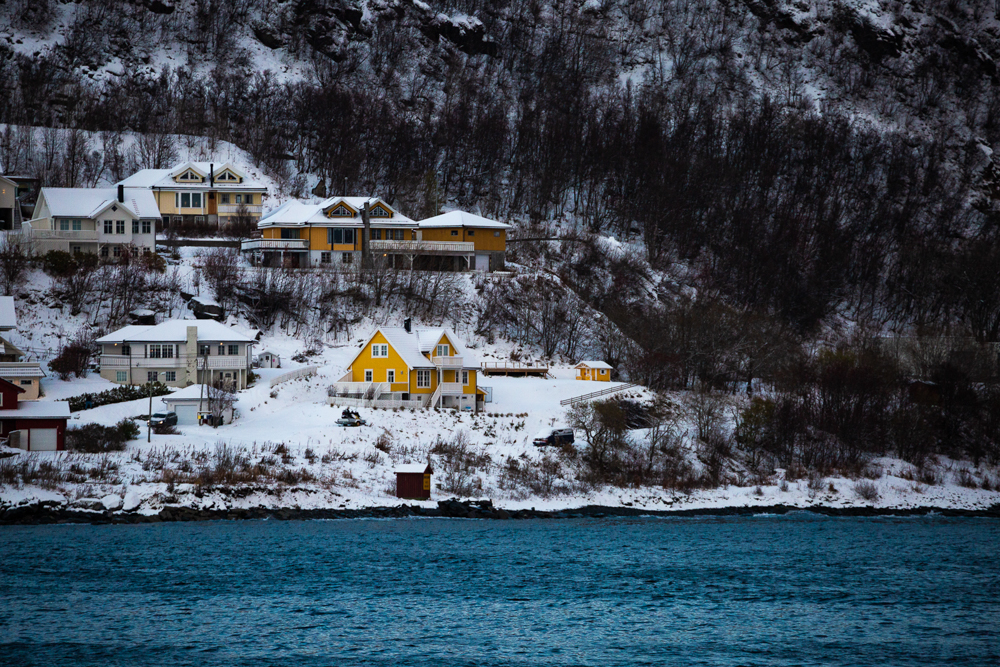Search this site
One Photographer’s Journey To Discover Norway’s Elusive Orca

Ten meters underwater, the photographer Todd Thimios searched for the large bull orca he’d seen on previous dives. He was on his annual journey to Arctic Norway, and temperatures in the water plunged to six degrees. He recognized the orca immediately when he saw his crooked dorsal fin slipped into view. Thimios held his breath as they came face to face.
For the last decade, Thimios has assisted in leading underwater expeditions, including those catering to superyacht owners. Through that work, he has educated billionaire travelers about the importance of conserving marine environments. He describes his job as a combination of “dive instructor/underwater photographer/submersible pilot.”
“To be able to travel the world and experience different underwater environments has been both a great honor and a privilege,” he tells me. “I think, to this day, that my favorite locations to dive around the world have been the Galapagos, Costa Rica, and at home in Australia.”
Still, even among all the destinations he’s seen, Arctic Norway occupies a unique place in his life and career, inspiring a passion for orca photography. On his first visit, years ago, he didn’t see any orcas, but the journey itself lingers in his memory. “I totally fell in love with the wild environment of the Arctic,” he explains. “The rawness and beauty were unparalleled.”
Over subsequent years, he learned more about the orcas, their behaviors, and their favorite spots. In the wild, these animals face a number of threats, including the depletion of their food sources (from commercial fishing) and ocean pollution. Noise pollution from boats, oil drilling, and other human activities can also interfere with their modes of communication. Live captures—many carried out in the 1960s—have also left lasting scars on whale populations.
Thimios, who is passionate about conservation as well as orca photography, follows a code of ethics. “It’s really important to show respect when trying to dive with cetaceans,” the photographer continues. “Letting them control the encounter is paramount—-keeping a safe and non-threatening distance. This not only allows the orcas to feel safe, but it also allows them to behave in a natural manner.”
Time and again, he’s found himself in awe of the whales’ intelligence. As he explained in a recent essay for Dive Magazine, orcas have been a constant in Thimios’s life. He met his wife, Melissa, on Instagram after she saw one of his photographs from Norway. They travel the world together now. Their young daughter, Piper Pearl, loves the ocean, and he dreams of introducing her to the orcas when she’s older.
Thimios understands that getting the chance to practice orca photography also means surrendering himself to the wild whims of the ocean. “With water temperatures around five degrees Celsius and wind chills below zero, diving in the Arctic is incredibly cold and harsh and definitely not for the faint-hearted,” the artist admits. “Finding orcas is by no means guaranteed, but when you do, it’s magical.”
Take, for example, that massive bull orca with the crooked fin. By the time they met, Thimios was already ten meters deep. “Through the darkness of the deep fjords, we took each other by surprise,” he tells me. “He slowly approached me until he was only centimeters away, with curiosity and a strange manner of delight. I remember this encounter so vividly: his enormous size, power, and grace.”





All images © Todd Thimios
Further reading:
• Paul Nicklen Captures the Beauty and Fragility of the Polar Regions